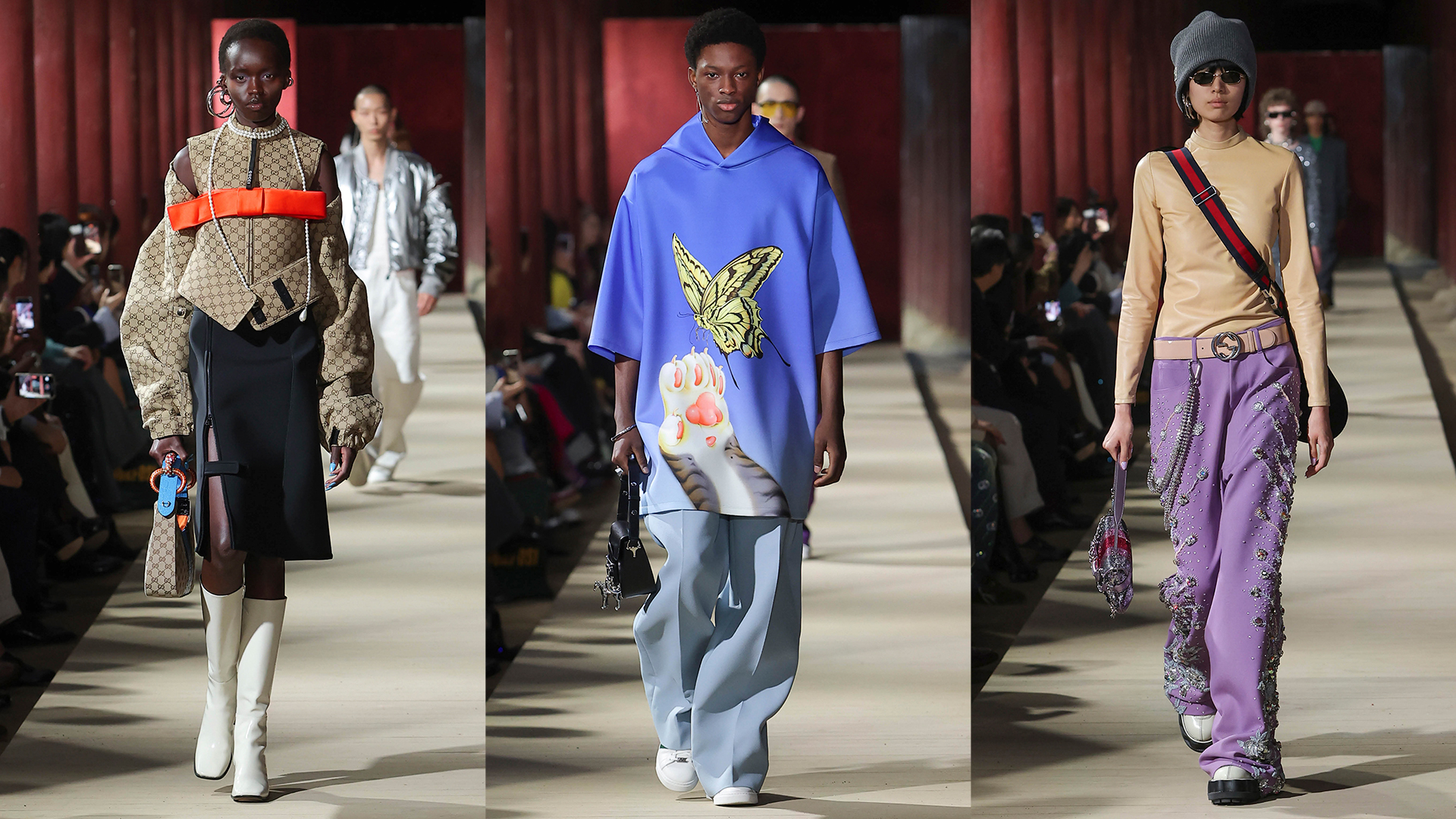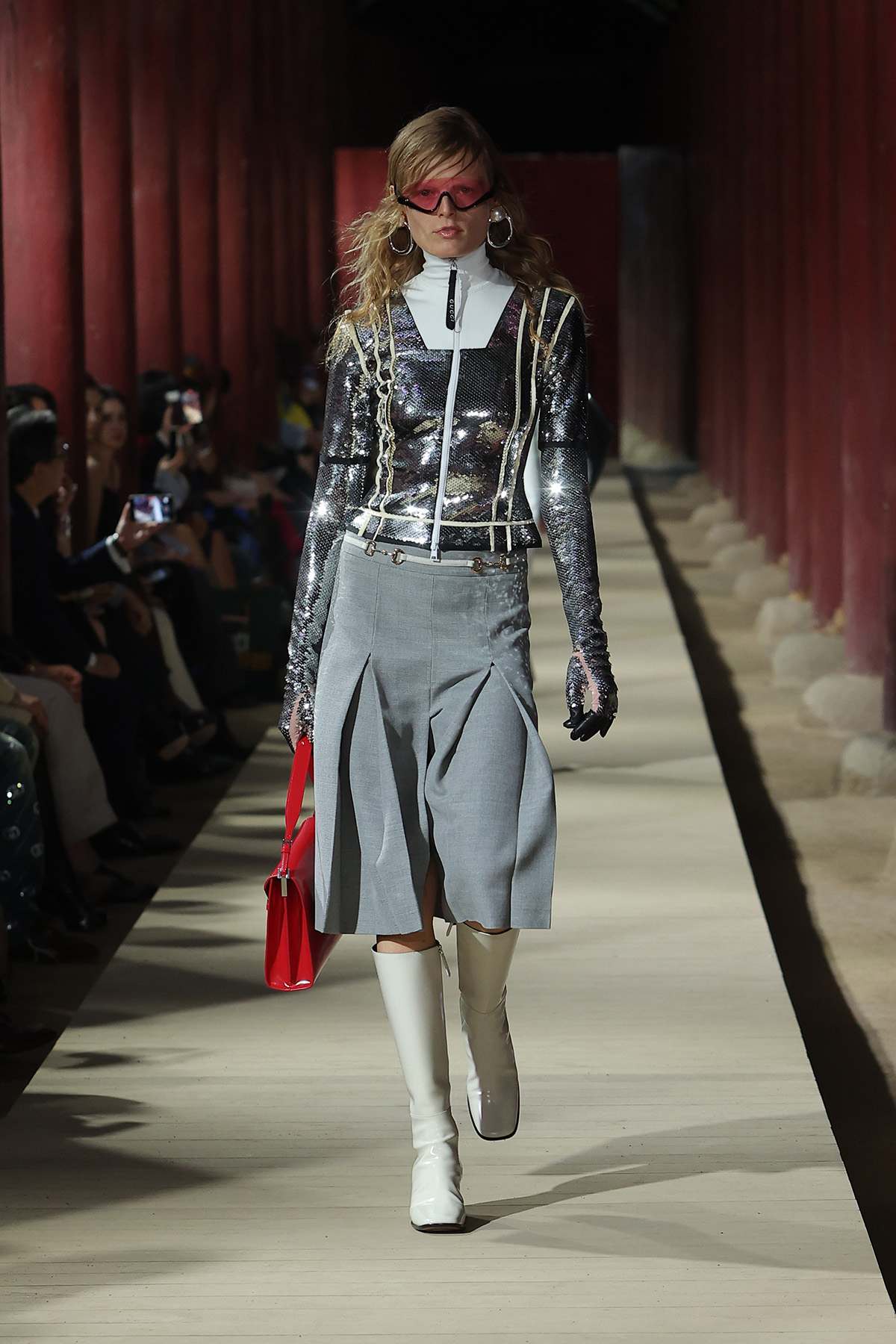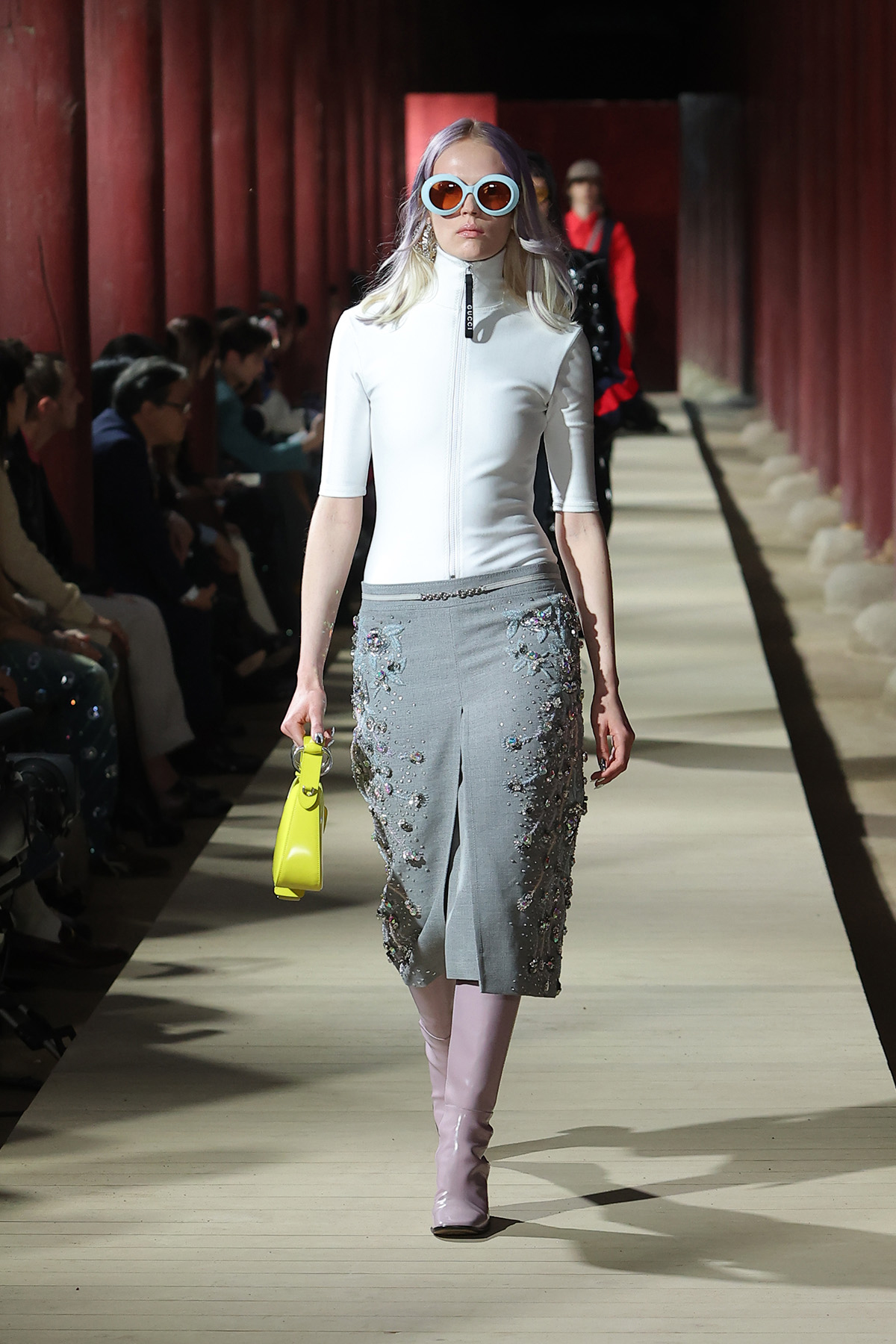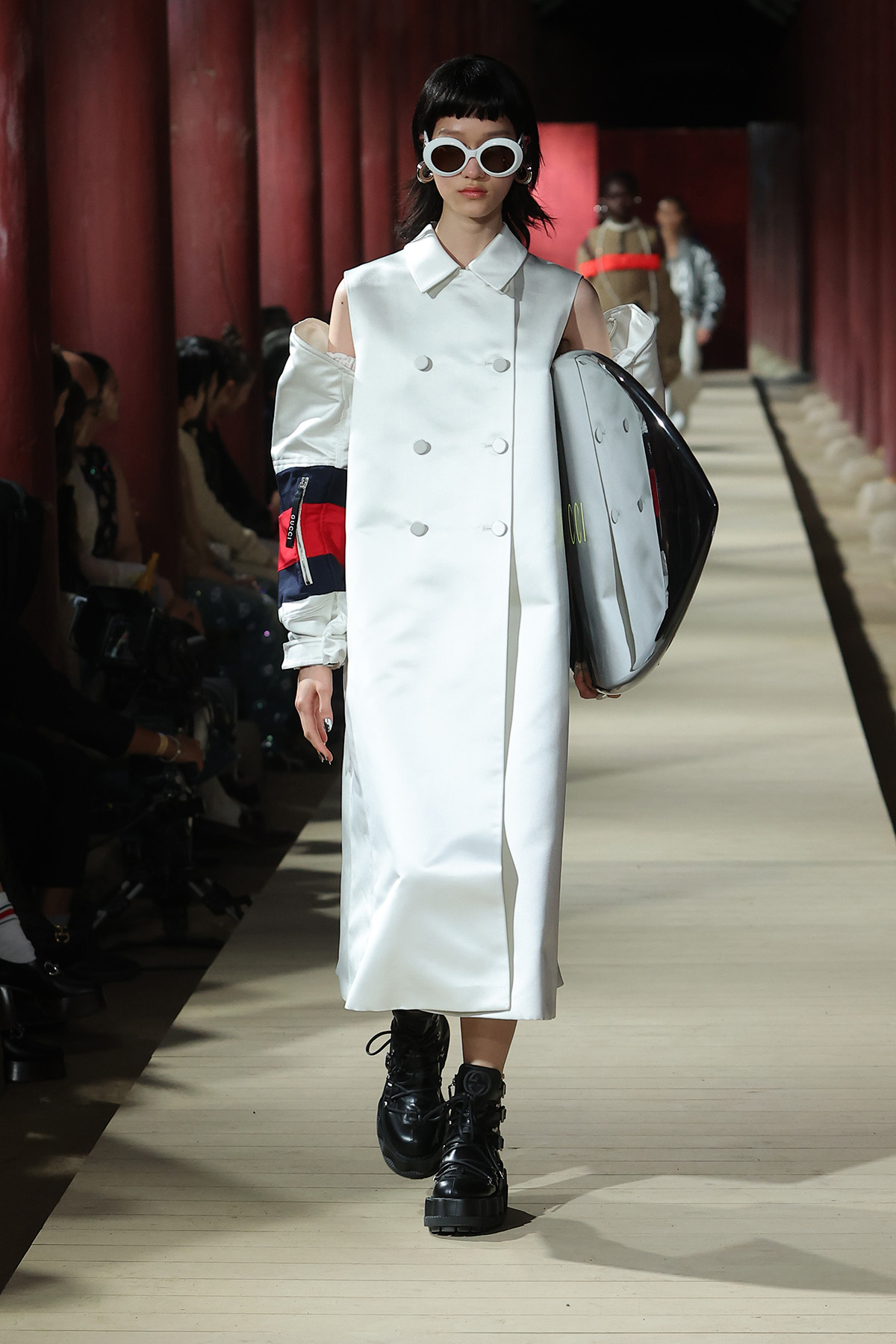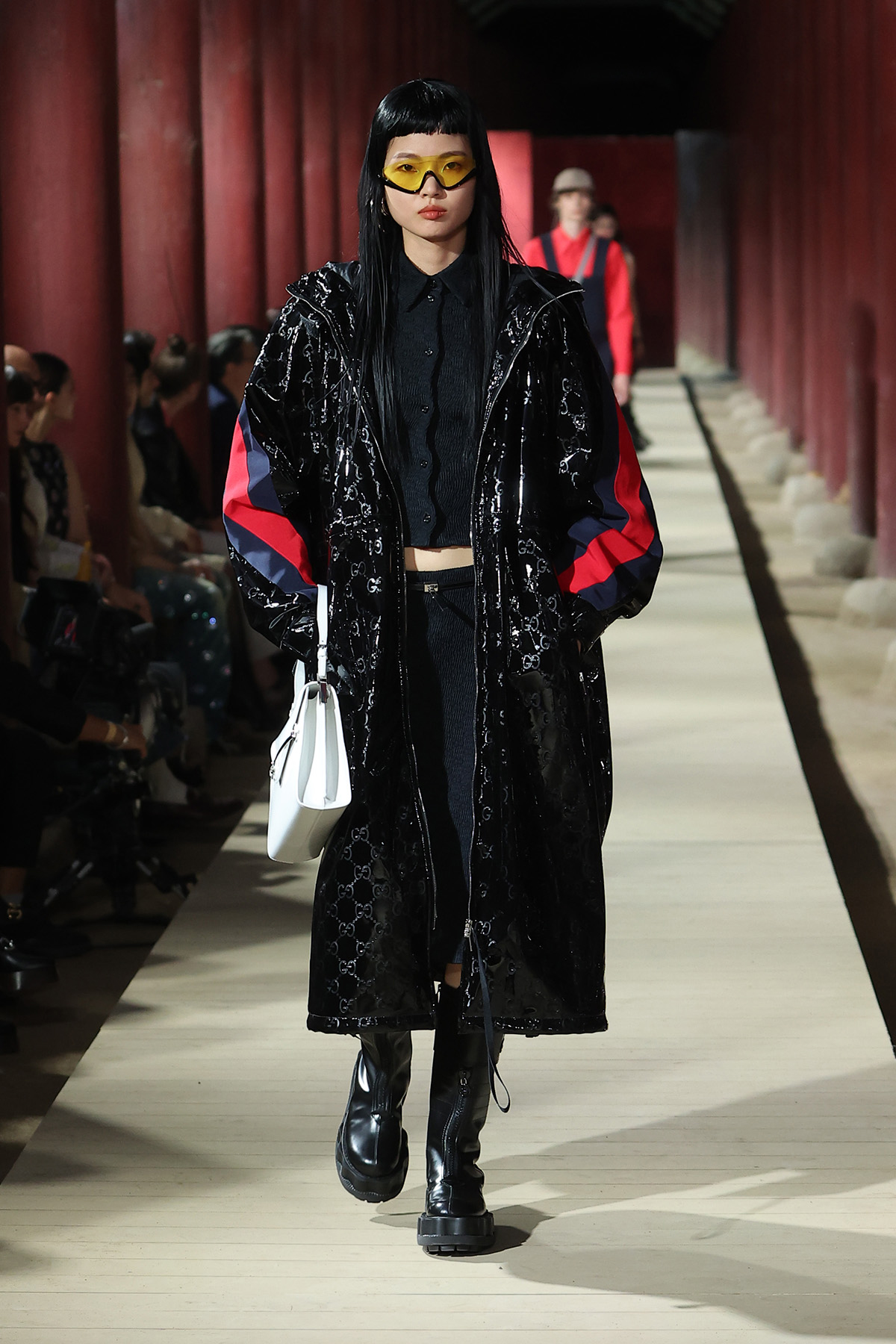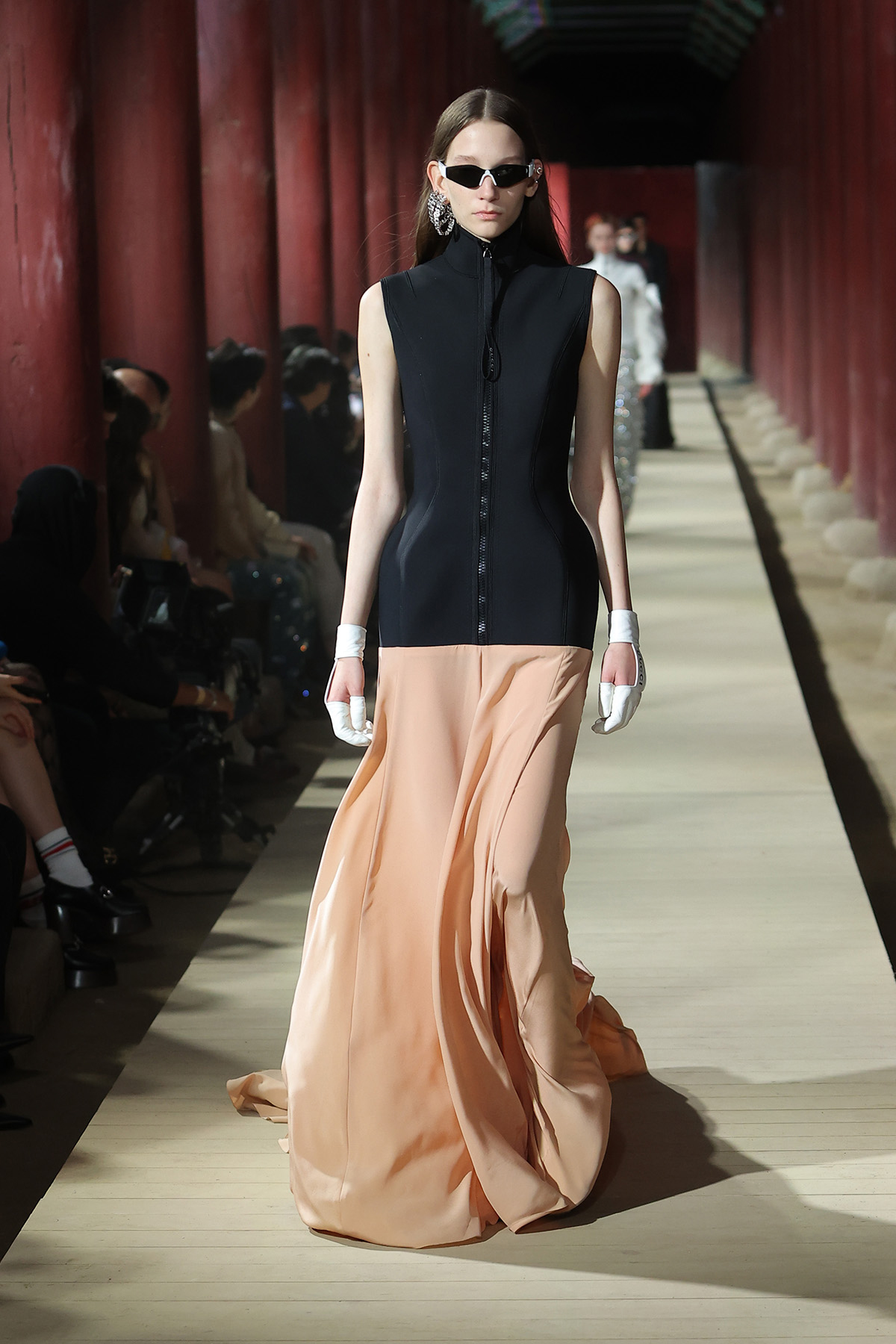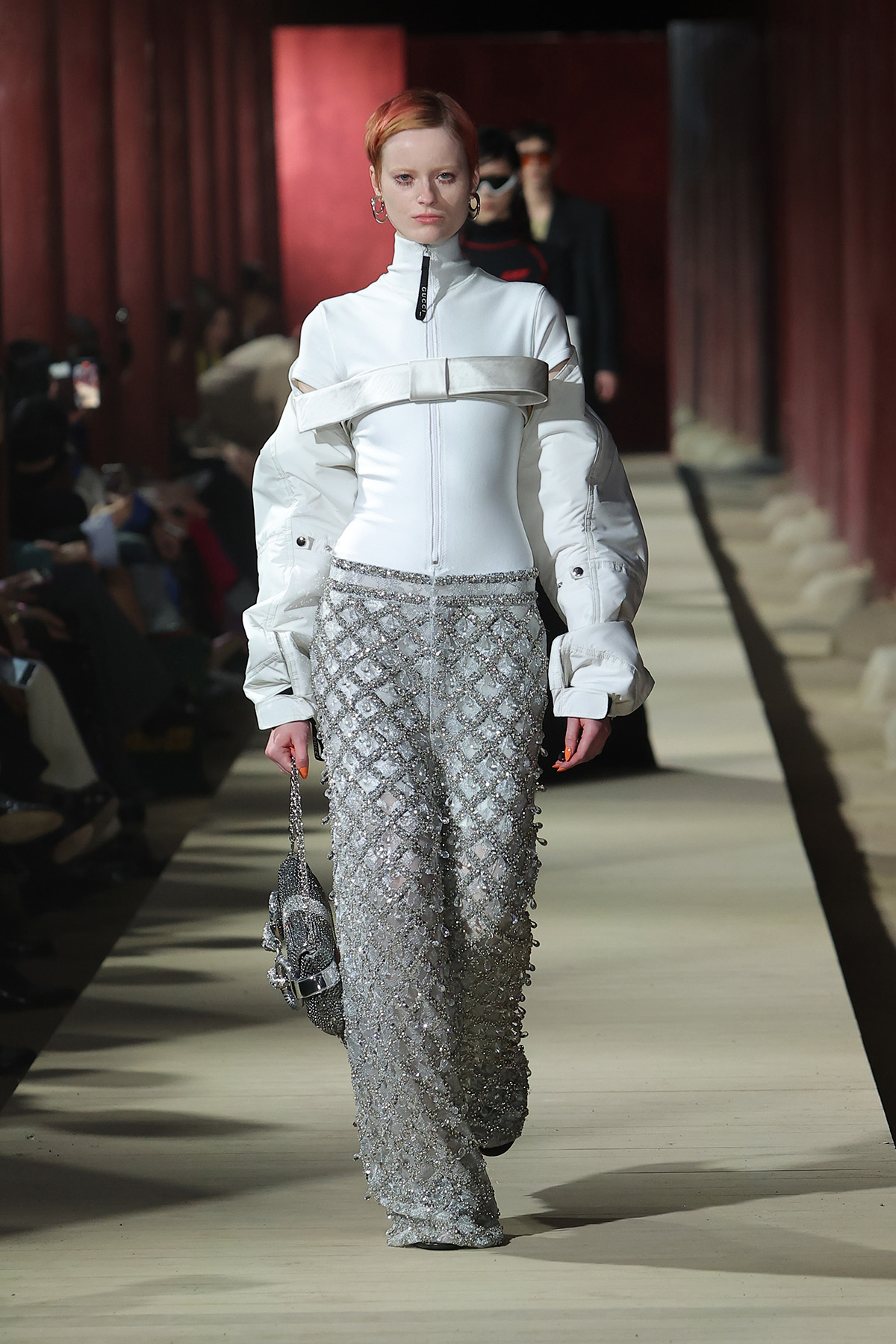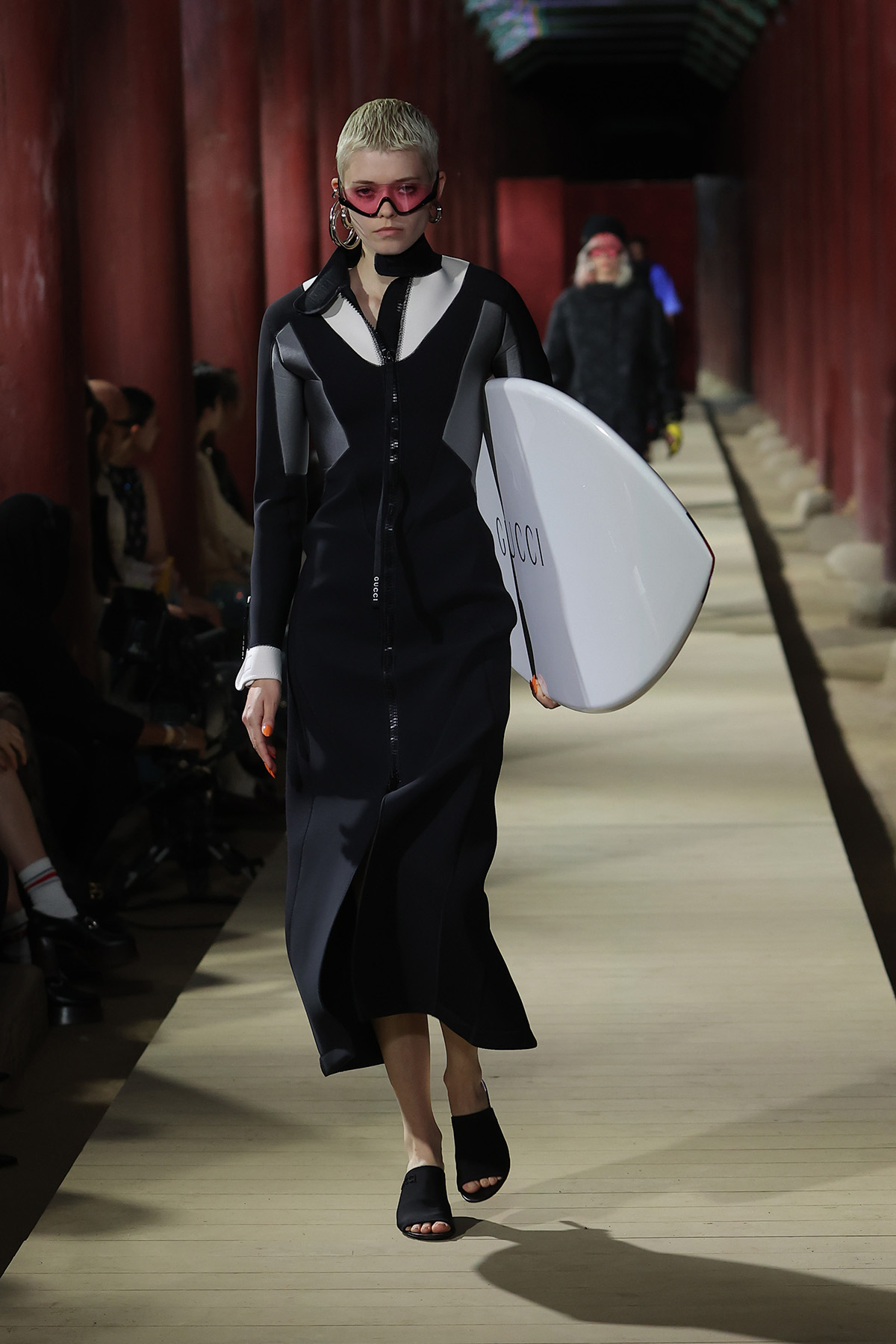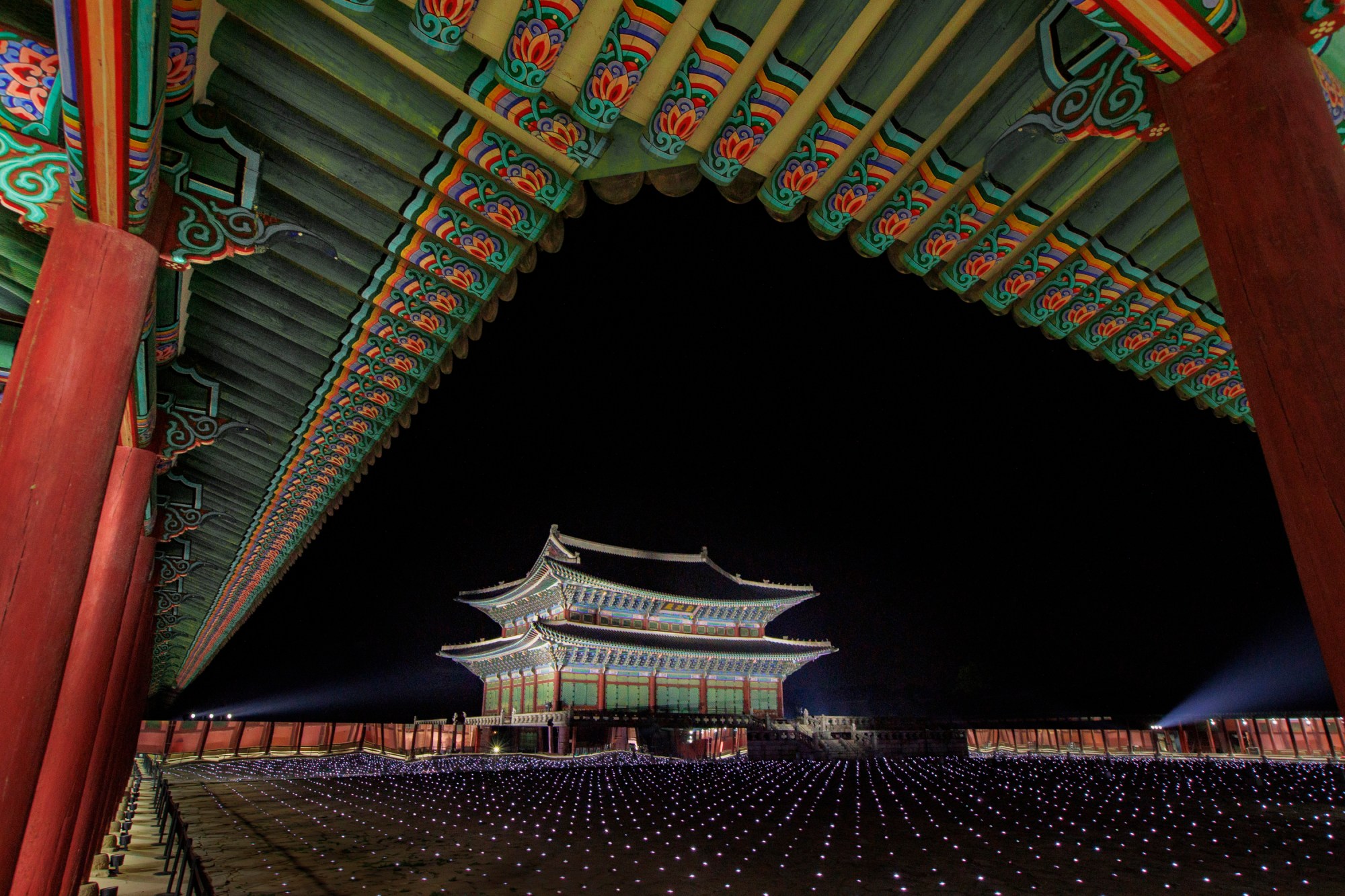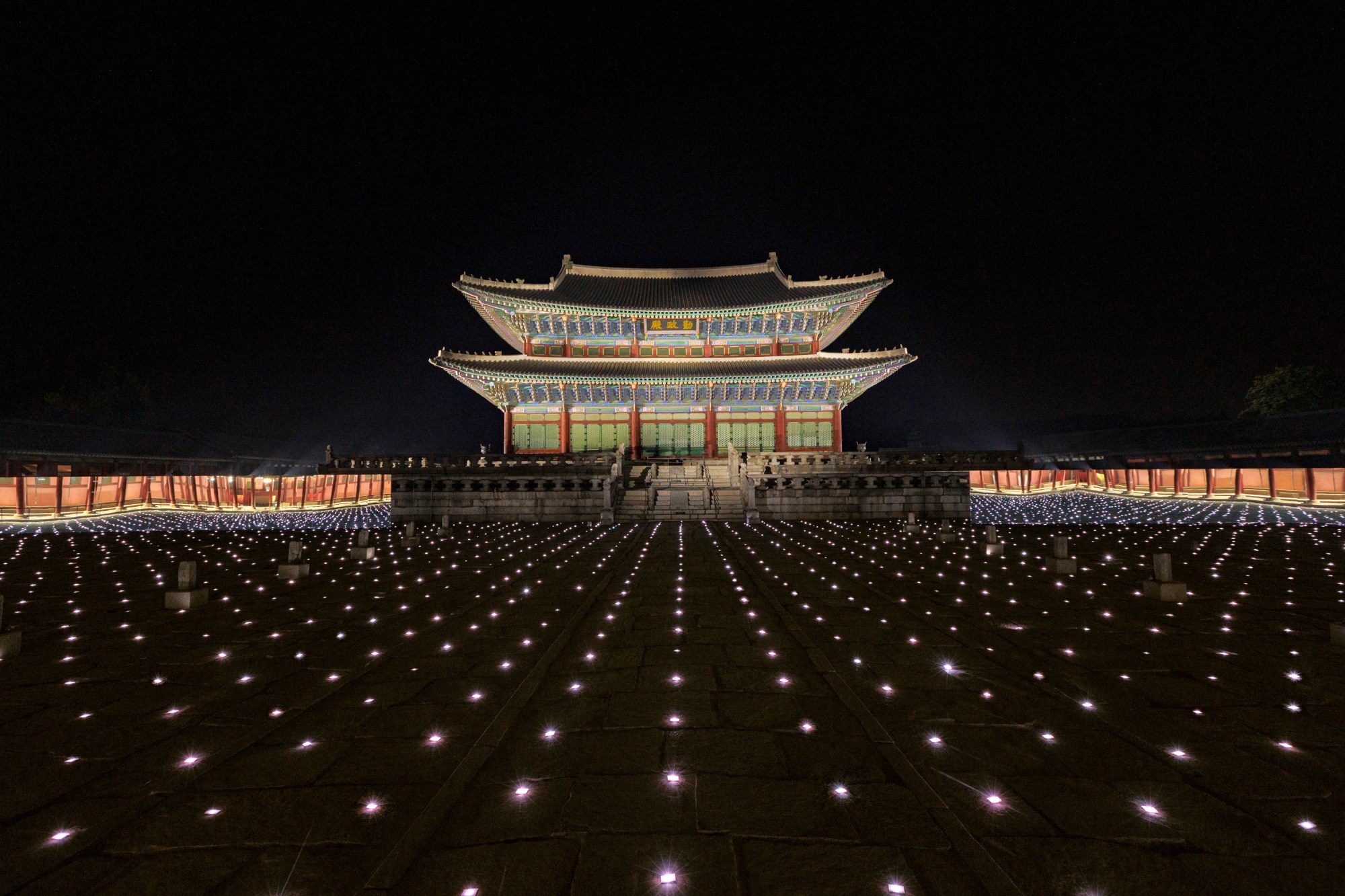Gucci’s cruise show in Seoul last night wasn’t Korea’s only pop-up fashion show this season. Just last month, Louis Vuitton staged a show here, too. What’s going on? Well, for a start, South Koreans spend an average of $325 (£260) on luxury goods each year, the highest per capita of any country, according to research by Morgan Stanley investment bank. But more than what it spends, Korea has become hugely influential in what it produces, both creatively and industrially. We are living in an era defined by Korean phenomena: cult beauty products that have gone global; Netflix-distributed hit TV shows and Oscar-winning movies; bestselling pop groups with every sound, look and brand deal imaginable; directional fashion and concept stores; the latest cutting-edge technology and machines produced here and sold around the world. Seoul is a bonafide cultural capital, and everyone is keen to get in on the action.
The setting for Gucci’s show was the 14th-century Gyeongbokgung Palace, the command post and fortress of the Joseon dynasty, a symbol of Korean power and pride which, until now, has remained off-limits for commercial events. Nestled within an enclave of uber-modern skyscrapers and rolling pine-covered mountains, the palace is at the heart of the city that is defined by contrasts — in fact, from beyond the palace walls, you could hear the chanting of hundreds of labour unionists a peaceful protest on the streets surrounding Gwanghwamun Square. Usually, it’s a tourist trap, but the fact that Gucci has bet big on Korea in the last few years with several events and launched here — and opened a boutique here in 1998, back in the Tom Ford days of Gucci — is perhaps why it could open some notoriously closed-off doors.
Indeed, there was something ceremonial about the setting; if not a coronation, then the official end of an era. In some ways, this collection marks the end of Alessandro Michele’s influential tenure at the house. Although he departed earlier this year, his studio team stayed on to design the collections — and his influence could be felt through the inherently maximilast setting, the loyal celebrity friends on the front row (Dakota Johnson, A$AP Rocky, Saoirse Ronan), and the clients dressed to the nines in his distinctive more-is-more vision. In September, the house will get a whole new look from incoming creative director Sabato De Sarno, who might change everything and anything. He only just started. This could well be the last collection with any resemblance to the familiar and distinctive Michelean reign at Gucci, which defined fashion in the latter half of the 2010s.
The collection itself was a self-confessed study of a global urban wardrobe, “a visual grammar spun from diverse geographic and historical codes,” as the show notes explained, as well as “a shared style language cultivated by a digital generation of communities connected across continents”. This is all to say that it was a lot of things: everything, everywhere, all at once. Generally, there was a sense of casual clothes with formalwear: jeans with crystal embellishments, something sporty worn under a trailing slip dress, big baggy trousers and ultra-sharp satin coats. You get the idea. The most distinctive thing was the novelty factor. There were surfers with their monogrammed boards and lots of neoprene scuba gear (apparently inspired by the fervent windsurfers and jet-skiers of Seoul’s Han River), skaters with their baggy overalls, chunky sneakers and — again — monogrammed skateboards with holographic logo pouches tucked underneath. It was nice that there was something light-hearted in what could have otherwise felt like an awkward season.
SUBSCRIBE TO I-D NEWSFLASH. A WEEKLY NEWSLETTER DELIVERED TO YOUR INBOX ON FRIDAYS.
So far, so universal. Essentially, the collection offered up a bit more of a contemporary melange of the usual Gucci-graded thrift store garb, this time given a heavy dose of monogramming and the occasional deconstructed sleeve, multiple zips, and a maze of cords and straps. But you could imagine in Rome or London or LA, just as much as you can in Seoul. There were, however, subtle nods to Korean culture. Occasionally, there was the empire-line, curved silhouette of the traditional Korean hanbok, which got a bit — ahem — global when applied to a scuba crop top worn with a high-waisted full maxi skirt. And a handful of graphics of cats and jelly came courtesy of a collaboration with Seoul-based artist Ram Han.
The show ended with a spectacular light display in the courtyard of the palace, and music from Jung Jae-il, who composed the score for the Oscar-winning movie Parasite (the first Korean film to win one). It really did feel like the end of an era. Come September, in the annals of the Gucci headquarters in Milan, we’ll be seeing a whole new Gucci. Consider this the design studio’s parting postcard from Seoul. Onwards and upwards!
